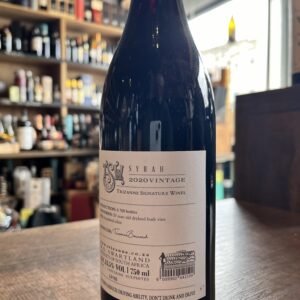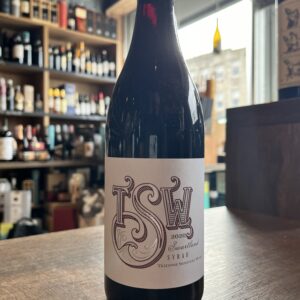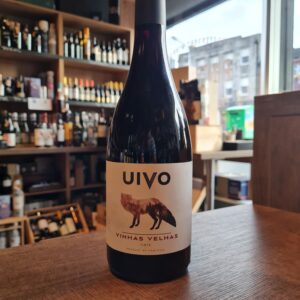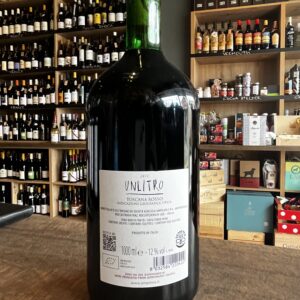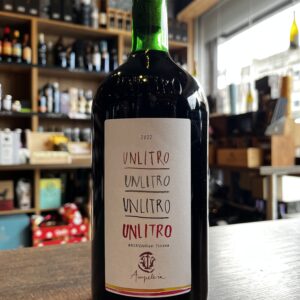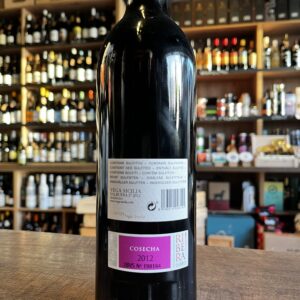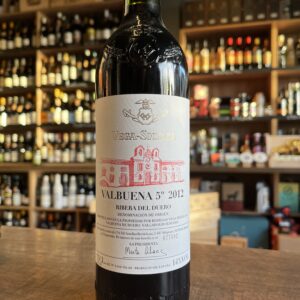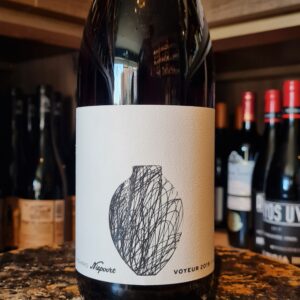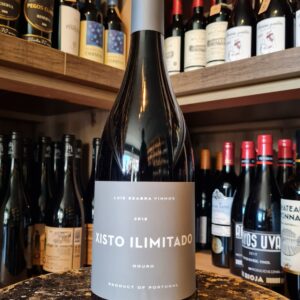-
Out of stock
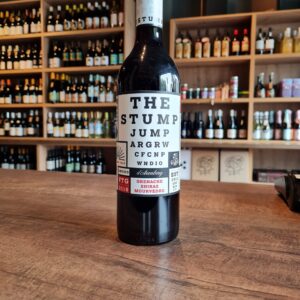 All three varieties play an important role - the Shiraz offers dark plum fruits, mulberries and licorice with plenty of concentration, depth and velvety tannin. The Grenache adds a lovely lusciousness to the wine with raspberry, blueberry and floral notes. Finally, the Mourvédre provides lovely red fruits with a hint of dried herb and importantly, a fine chalky tannin that carries all these characters to a long and wonderfully moreish finish.The fruit weight and silkyness means this wine can be enjoyed now, but it will keep developing over time. This wine screams value, recommended with hard cheeses and red meats.
All three varieties play an important role - the Shiraz offers dark plum fruits, mulberries and licorice with plenty of concentration, depth and velvety tannin. The Grenache adds a lovely lusciousness to the wine with raspberry, blueberry and floral notes. Finally, the Mourvédre provides lovely red fruits with a hint of dried herb and importantly, a fine chalky tannin that carries all these characters to a long and wonderfully moreish finish.The fruit weight and silkyness means this wine can be enjoyed now, but it will keep developing over time. This wine screams value, recommended with hard cheeses and red meats. -
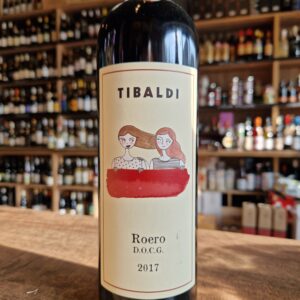 The Tibaldi family have been grape growers for several generations in the Pocapaglia area of Piemonte. In fact Nonno Tibaldi at 86 still works in the vineyard (starting with a glass from the barrel at 6am) with his son, Stefano. The Tibaldi’s have not traditionally made wine preferring to sell their crops to local producers. Stefano had 2 daughters, Monica and Daniela, and had no expectations that they would devote their lives to wine. But eldest daughter Monica studied Oenology and decided that she was going to start to make wine from the family’s wonderful fruit. Sister Daniela soon followed. And so Cantina Tibaldi was established. I simply know them as the Tibaldi Sisters. It is not unusual to see female winemakers in charge of important vineyards. Some of Australia’s finest wines are made by women and they will tell you that they are much better suited to the role as the olfactory senses are far more developed in females. What is unusual is to see the entire wine making process managed from start to finish by two women, both in their mid twenties. It can accompany any meat. Gives its best with important cheese, savory pasta and meat dishes.
The Tibaldi family have been grape growers for several generations in the Pocapaglia area of Piemonte. In fact Nonno Tibaldi at 86 still works in the vineyard (starting with a glass from the barrel at 6am) with his son, Stefano. The Tibaldi’s have not traditionally made wine preferring to sell their crops to local producers. Stefano had 2 daughters, Monica and Daniela, and had no expectations that they would devote their lives to wine. But eldest daughter Monica studied Oenology and decided that she was going to start to make wine from the family’s wonderful fruit. Sister Daniela soon followed. And so Cantina Tibaldi was established. I simply know them as the Tibaldi Sisters. It is not unusual to see female winemakers in charge of important vineyards. Some of Australia’s finest wines are made by women and they will tell you that they are much better suited to the role as the olfactory senses are far more developed in females. What is unusual is to see the entire wine making process managed from start to finish by two women, both in their mid twenties. It can accompany any meat. Gives its best with important cheese, savory pasta and meat dishes. -
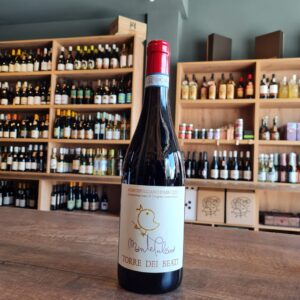 Some of you may have been lucky enough to visit Italy and have seen the amazing art and the cities and villages steeped in history. Italy is, and will always be that kind of destination where everything is out of this world. The art, the cities, the food (OMG, the food) and last but by all means not least, the wine!!! Yes of course we all have had a few Italian wines that weren't up to scratch, but generally they are hard to find unless you don't read the labels or you are really at a loss with them. As per anything Italians do, their culture and often their wine are connected to their history and the Italians take great pride in this (rightfully so). Torre dei beati is a pure example of that, as it translates as “Tower of the Blessed”, and takes its lead from a section of the large 14th century fresco adorning the church of Santa Maria in Piano at the base of the town’s hillside. The fresco features an interpretation of the Judgement Day, where a tower is the final goal for souls who have reached the after-life. And so it came to pass that the team at Torre dei Beati imagined this mythical tower to symbolise all that they aim to achieve in their efforts to create a wine typical of its locale and honestly made: though the journey may be tough and at first seemingly impossible, the end more than justified the means. The winery is owned and run by husband-and-wife team Adrianna Galasso and Fausto Albanesi. Fausto’s father-in-law, Rocco, planted the first Torre dei Beati vineyard in 1972 and handed over control in 1999 to the young couple who quickly converted the estate to organic farming in 2000, long before it became the hip thing to do. Although you can find in every Irish Restaurant Montepulciano(Grape) d'Abruzzo(The Region), most of these wines are somewhat of inferior quality due to the majority of the local winemakers focusing on quantity rather than quality. Here is quite opposite, with only the best bunches are hand-picked from the Loreto Aprutino vineyard to make this elegant Montepulciano. The wine is aged for 12 months, half in 3000l Slovenian oak casks, half in second-use French oak barriques. Showing complex fruit, lightly touched by spicy oak. Full bodied yet smooth; the finely balanced tannins work well with natural minerality and measured acidity for a lingering finish.
Some of you may have been lucky enough to visit Italy and have seen the amazing art and the cities and villages steeped in history. Italy is, and will always be that kind of destination where everything is out of this world. The art, the cities, the food (OMG, the food) and last but by all means not least, the wine!!! Yes of course we all have had a few Italian wines that weren't up to scratch, but generally they are hard to find unless you don't read the labels or you are really at a loss with them. As per anything Italians do, their culture and often their wine are connected to their history and the Italians take great pride in this (rightfully so). Torre dei beati is a pure example of that, as it translates as “Tower of the Blessed”, and takes its lead from a section of the large 14th century fresco adorning the church of Santa Maria in Piano at the base of the town’s hillside. The fresco features an interpretation of the Judgement Day, where a tower is the final goal for souls who have reached the after-life. And so it came to pass that the team at Torre dei Beati imagined this mythical tower to symbolise all that they aim to achieve in their efforts to create a wine typical of its locale and honestly made: though the journey may be tough and at first seemingly impossible, the end more than justified the means. The winery is owned and run by husband-and-wife team Adrianna Galasso and Fausto Albanesi. Fausto’s father-in-law, Rocco, planted the first Torre dei Beati vineyard in 1972 and handed over control in 1999 to the young couple who quickly converted the estate to organic farming in 2000, long before it became the hip thing to do. Although you can find in every Irish Restaurant Montepulciano(Grape) d'Abruzzo(The Region), most of these wines are somewhat of inferior quality due to the majority of the local winemakers focusing on quantity rather than quality. Here is quite opposite, with only the best bunches are hand-picked from the Loreto Aprutino vineyard to make this elegant Montepulciano. The wine is aged for 12 months, half in 3000l Slovenian oak casks, half in second-use French oak barriques. Showing complex fruit, lightly touched by spicy oak. Full bodied yet smooth; the finely balanced tannins work well with natural minerality and measured acidity for a lingering finish. -
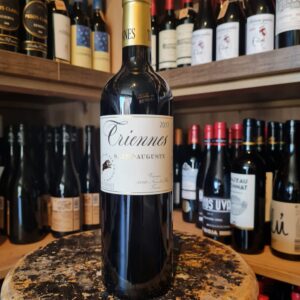 Saint Auguste is a selection of the best cuvées of Syrah, Cabernet-Sauvignon and Merlot. The robe is rich dark purple with bright ruby highlights. It offers alluring aromas of ripe black cherries, nutmeg and clove. It is full and concentrated and is a wine that can be enjoyed upon release and over the following ten to fifteen years.
Saint Auguste is a selection of the best cuvées of Syrah, Cabernet-Sauvignon and Merlot. The robe is rich dark purple with bright ruby highlights. It offers alluring aromas of ripe black cherries, nutmeg and clove. It is full and concentrated and is a wine that can be enjoyed upon release and over the following ten to fifteen years. -
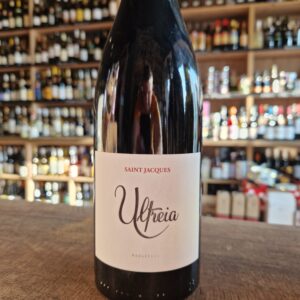 This winery is a personal project of the renowned oenologist from León, Raúl Pérez. Since he worked in the winery Castro Ventosa, which caused a true revolution in El Bierzo, Raúl Pérez has not stopped. He is undoubtedly one of the most admired winemakers in Spain, the master of wines with an Atlantic character. Pérez is the magician of Mencía, he knows the variety better than anyone and works his vineyards with total respect for nature. His wines are a lesson in elegance and their simplicity also proves that high quality doesn’t necessarily mean exorbitant prices. Pleasant, elegant and authentic wines that are definitely worth much more than they cost, such as Ultreia Saint Jacques, an astonishing Mencía red wine that offers so much for so little. In addition, its fresh personality makes it an ideal wine to be enjoyed even on summer days
This winery is a personal project of the renowned oenologist from León, Raúl Pérez. Since he worked in the winery Castro Ventosa, which caused a true revolution in El Bierzo, Raúl Pérez has not stopped. He is undoubtedly one of the most admired winemakers in Spain, the master of wines with an Atlantic character. Pérez is the magician of Mencía, he knows the variety better than anyone and works his vineyards with total respect for nature. His wines are a lesson in elegance and their simplicity also proves that high quality doesn’t necessarily mean exorbitant prices. Pleasant, elegant and authentic wines that are definitely worth much more than they cost, such as Ultreia Saint Jacques, an astonishing Mencía red wine that offers so much for so little. In addition, its fresh personality makes it an ideal wine to be enjoyed even on summer days -
 In 2003, José Ribeiro Vieira purchased a four hectare vineyard in the foothills of Serra de Aire of Cortes, in the Alta Estremadura, near Lisbon. Vale da Mata pays tribute to Vieira’s winemaker father, Manuel, who claimed that Vale de Mata was the site where he succeeded in producing his best wines. The Vale de Mata project respects the expression of its terroir, cultivating the vines sustainably and using minimal intervention in the winery. Manuel gave this wine its name and his granddaughter Catarina Viera has followed in his footsteps, continuing his winemaking legacy. In 2018. Vale da Mata is the name of a small, old vineyard located in the foothills of Serra de Aire, in Cortes. The vineyard has a maritime climate and is influenced by the Atlantic Ocean. The parcel is just a few hectares and is situated on a steep terrain with rocky soil. The land is extremely hard to work and is cultivated manually, with winter pruning and green harvesting taking place by hand. Protected to the north, it has good sunlight exposure throughout the day and is surrounded by olive trees, fig trees, walnuts and shrubs. Vale de Mata is associated with several sustainable programmes; they are a member of the FSC and grow all their grapes according to organic philosophies. The vines are trained according to the Cordon Royat method and the grapes are manually harvested at optimum maturity.
In 2003, José Ribeiro Vieira purchased a four hectare vineyard in the foothills of Serra de Aire of Cortes, in the Alta Estremadura, near Lisbon. Vale da Mata pays tribute to Vieira’s winemaker father, Manuel, who claimed that Vale de Mata was the site where he succeeded in producing his best wines. The Vale de Mata project respects the expression of its terroir, cultivating the vines sustainably and using minimal intervention in the winery. Manuel gave this wine its name and his granddaughter Catarina Viera has followed in his footsteps, continuing his winemaking legacy. In 2018. Vale da Mata is the name of a small, old vineyard located in the foothills of Serra de Aire, in Cortes. The vineyard has a maritime climate and is influenced by the Atlantic Ocean. The parcel is just a few hectares and is situated on a steep terrain with rocky soil. The land is extremely hard to work and is cultivated manually, with winter pruning and green harvesting taking place by hand. Protected to the north, it has good sunlight exposure throughout the day and is surrounded by olive trees, fig trees, walnuts and shrubs. Vale de Mata is associated with several sustainable programmes; they are a member of the FSC and grow all their grapes according to organic philosophies. The vines are trained according to the Cordon Royat method and the grapes are manually harvested at optimum maturity. -
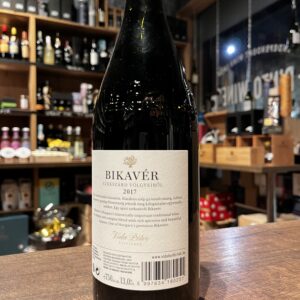
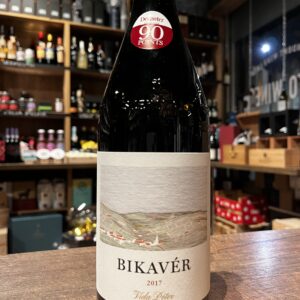 Bikaver is a Hungarian blend based on Kékfrankos and Kadarka. The two local grapes must together make up at least 50% of the blend, while oak should be used sparingly. Szekszárdi Bikavér is generally medium ruby in colour with pronounced fruit and spice, vibrant acidity and silky, velvety tannins. Its aromatics are characterised by spice, paprika, mint, hibiscus and rosemary as well as red berry fruit, cherry, raspberry and plum. Kékfrankos provides the blend’s backbone, freshness, acidity and pronounced yet silky tannins. While Kadarka is responsible for its floral, spicy notes, which add bewitching lightness to the wine. Of course, as always, much depends on the winemaker’s style too, but what is certain is that Szekszárdi Bikavér is a truly appealing, elegant wine, which speaks of the place of origin.
Bikaver is a Hungarian blend based on Kékfrankos and Kadarka. The two local grapes must together make up at least 50% of the blend, while oak should be used sparingly. Szekszárdi Bikavér is generally medium ruby in colour with pronounced fruit and spice, vibrant acidity and silky, velvety tannins. Its aromatics are characterised by spice, paprika, mint, hibiscus and rosemary as well as red berry fruit, cherry, raspberry and plum. Kékfrankos provides the blend’s backbone, freshness, acidity and pronounced yet silky tannins. While Kadarka is responsible for its floral, spicy notes, which add bewitching lightness to the wine. Of course, as always, much depends on the winemaker’s style too, but what is certain is that Szekszárdi Bikavér is a truly appealing, elegant wine, which speaks of the place of origin. -
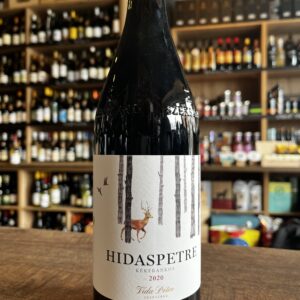 Single vineyard Kekfrankos from Szekszard. The valley of Hidaspetre is surrounded by forest, where the countryside is loud with the singing of birds at dawn. Our vineyard selection is an elegant and beautifully balanced wine with refreshing tannins. Soil: calcareous loess soil with red clay Cultivation method, load: low cordon, 40-50 hl/ha Harvest: September 22-24, 2020
Single vineyard Kekfrankos from Szekszard. The valley of Hidaspetre is surrounded by forest, where the countryside is loud with the singing of birds at dawn. Our vineyard selection is an elegant and beautifully balanced wine with refreshing tannins. Soil: calcareous loess soil with red clay Cultivation method, load: low cordon, 40-50 hl/ha Harvest: September 22-24, 2020 -
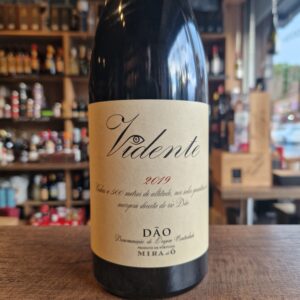 This wine rises from 500 meters above sea level in the granite soils of the right bank of the Dão. These low yield vines are about 30 years old and produce high quality grapes of the varieties Jaen, Alfrocheiro, Tinta Pinheira, Tinta Roriz and Touriga Nacional. This wine is a very personal vision over the Dão and its wines, enhancing the elegance and freshness that are natural to this region. True value in wine. Food orientated but aren't all the wines?
This wine rises from 500 meters above sea level in the granite soils of the right bank of the Dão. These low yield vines are about 30 years old and produce high quality grapes of the varieties Jaen, Alfrocheiro, Tinta Pinheira, Tinta Roriz and Touriga Nacional. This wine is a very personal vision over the Dão and its wines, enhancing the elegance and freshness that are natural to this region. True value in wine. Food orientated but aren't all the wines? -
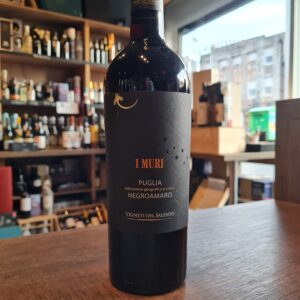 Great value wine from Puglia. This is Farnese’s venture in Puglia. The wines are made at two wineries in the province of Taranto on the western flank of Salento. The style of the wines - fresh whites, soft and generous reds - will be familiar to those who buy their other wines, as winemaker Filippo Baccalaro is the driving force behind this label. Filippo, a native of Piemonte, has been working in Puglia for almost two decades. He was attracted by the rich, ripe flavours of the fruit, and has the potential to capture these flavours with minimal use of technology and a lot of know-how. The vineyards are mostly situated in the communes of Manduria and Sava and are owned by growers with whom Filippo has been working for many years. Production is lower than its potential, which ensures the best quality grapes are selected. The red soils are calcerous clay and rich in iron, minerals and nutrients. 80% of the grapes come from old bush vines and the rest from trained vines that are at least 20 years old. Spring was colder than usual, and this slowed down budbreak and flowering. May and June followed with above average rainfall. Despite this, the Mistral and the north wind persisted for more than 30 days and this allowed vines to keep healthy during the ripening phase delivering extraordinary quality but with 20% lower yields. Enjoy with Pastas, cheeses, Chicken dishes and some not too rich red meats
Great value wine from Puglia. This is Farnese’s venture in Puglia. The wines are made at two wineries in the province of Taranto on the western flank of Salento. The style of the wines - fresh whites, soft and generous reds - will be familiar to those who buy their other wines, as winemaker Filippo Baccalaro is the driving force behind this label. Filippo, a native of Piemonte, has been working in Puglia for almost two decades. He was attracted by the rich, ripe flavours of the fruit, and has the potential to capture these flavours with minimal use of technology and a lot of know-how. The vineyards are mostly situated in the communes of Manduria and Sava and are owned by growers with whom Filippo has been working for many years. Production is lower than its potential, which ensures the best quality grapes are selected. The red soils are calcerous clay and rich in iron, minerals and nutrients. 80% of the grapes come from old bush vines and the rest from trained vines that are at least 20 years old. Spring was colder than usual, and this slowed down budbreak and flowering. May and June followed with above average rainfall. Despite this, the Mistral and the north wind persisted for more than 30 days and this allowed vines to keep healthy during the ripening phase delivering extraordinary quality but with 20% lower yields. Enjoy with Pastas, cheeses, Chicken dishes and some not too rich red meats -
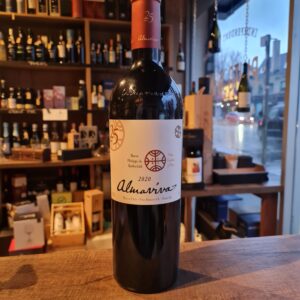 To celebrate the estate's 25th anniversary, the 2020 vintage by Almaviva is adorned with a special "25 años" label. Viña Almaviva was founded in 1997 following the collaboration between Baroness Philippine de Rothschild and Don Alfonso Larrain, President of Viña Concha y Toro. The Viña Almaviva project gives rise to fine Chilean wines that benefit from a rich French winemaking know-how and the unique expression of this Central Valley terroir. The name Almaviva, though it has an Hispanic sonority, belongs to classical French literature: Count Almaviva is the hero of The Marriage of Figaro, the famous play by Beaumarchais (1732-1799), later turned into an opera by the genius of Mozart. The label, meanwhile, pays homage to Chile’s ancestral history, with three reproductions of a stylized design, which symbolizes the vision of the earth and the cosmos in the Mapuche civilization. The design appears on the kultrun, a ritual drum used by the Mapuche. The label bears the name Almaviva in Beaumarchais’ own handwriting. Two great traditions thus join hands to offer the whole world a promise of pleasure and excellence. Located in the heart of the beautiful Maipo Valley, the Almaviva vineyard covers 50 hectares. The emblematic Bordeaux grape varieties thrive in this exceptional terroir. Almaviva has now become an essential reference for fine Chilean wines throughout the world. A particularly dry year, 2020 began with a cool, dry winter, resulting in a late budburst, particularly during the first two weeks of October. The spring and summer were marked by high temperatures but also by drought. These conditions favoured a rapid maturation of the vineyard and an early harvest, which ended three to four weeks earlier than in recent years. Despite this extreme climate and thanks to the rigour of the teams, the 2020 vintage reveals a fruity structure, a fresh expression and a rare tension.
To celebrate the estate's 25th anniversary, the 2020 vintage by Almaviva is adorned with a special "25 años" label. Viña Almaviva was founded in 1997 following the collaboration between Baroness Philippine de Rothschild and Don Alfonso Larrain, President of Viña Concha y Toro. The Viña Almaviva project gives rise to fine Chilean wines that benefit from a rich French winemaking know-how and the unique expression of this Central Valley terroir. The name Almaviva, though it has an Hispanic sonority, belongs to classical French literature: Count Almaviva is the hero of The Marriage of Figaro, the famous play by Beaumarchais (1732-1799), later turned into an opera by the genius of Mozart. The label, meanwhile, pays homage to Chile’s ancestral history, with three reproductions of a stylized design, which symbolizes the vision of the earth and the cosmos in the Mapuche civilization. The design appears on the kultrun, a ritual drum used by the Mapuche. The label bears the name Almaviva in Beaumarchais’ own handwriting. Two great traditions thus join hands to offer the whole world a promise of pleasure and excellence. Located in the heart of the beautiful Maipo Valley, the Almaviva vineyard covers 50 hectares. The emblematic Bordeaux grape varieties thrive in this exceptional terroir. Almaviva has now become an essential reference for fine Chilean wines throughout the world. A particularly dry year, 2020 began with a cool, dry winter, resulting in a late budburst, particularly during the first two weeks of October. The spring and summer were marked by high temperatures but also by drought. These conditions favoured a rapid maturation of the vineyard and an early harvest, which ended three to four weeks earlier than in recent years. Despite this extreme climate and thanks to the rigour of the teams, the 2020 vintage reveals a fruity structure, a fresh expression and a rare tension. -
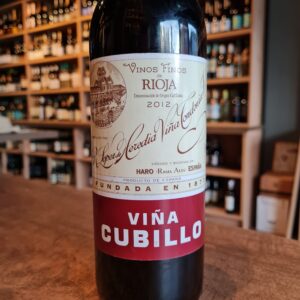 Viña Cubillo wines come from the vineyard called Viña Cubillas, some 4 km away from the bodega, which as with all of the other vineyards, was bought by our founder. Historically these wines were called "Special Harvest". For 143 years, four generations of the López de Heredia family have devoted themselves to producing exceptional and unique wines. Masterpieces which have achieved that which the founder of the company, Rafael López de Heredia y Landeta, defined in the late nineteenth century as the "Supreme Rioja". Vineyard care, a scrupulous selection of grapes, ageing in oak barrels in the heart of deep underground galleries, and the later ageing in bottles, all contribute to making these illustrious wines with their exceptional bouquet. Decant it for an hour if possible, It goes perfectly with all meat dishes, tapas and assorted antipasti, sausages, small game and wild mushrooms.
Viña Cubillo wines come from the vineyard called Viña Cubillas, some 4 km away from the bodega, which as with all of the other vineyards, was bought by our founder. Historically these wines were called "Special Harvest". For 143 years, four generations of the López de Heredia family have devoted themselves to producing exceptional and unique wines. Masterpieces which have achieved that which the founder of the company, Rafael López de Heredia y Landeta, defined in the late nineteenth century as the "Supreme Rioja". Vineyard care, a scrupulous selection of grapes, ageing in oak barrels in the heart of deep underground galleries, and the later ageing in bottles, all contribute to making these illustrious wines with their exceptional bouquet. Decant it for an hour if possible, It goes perfectly with all meat dishes, tapas and assorted antipasti, sausages, small game and wild mushrooms. -
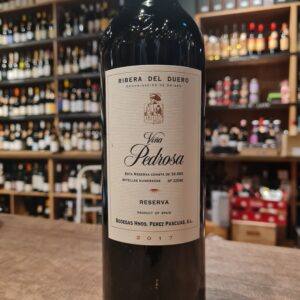 Bodegas Hnos. Perez Pascuas is a winery founded in 1980 and located in Pedrosa de Duero. In its vineyards, Tinta del País or Tempranillo predominate, and they also have a little Cabernet Sauvignon. They produce around 500,000 bottles. They also have a large collection of 3,000 barrels. The barrels are renewed every 3 years to maintain the contribution of compounds from the wood, and the toasted elements that characterise the style of the winery. Viña Pedrosa Reserva is an iconic wine from Pedrosa de Duero. A complex, powerful and highly expressive wine
Bodegas Hnos. Perez Pascuas is a winery founded in 1980 and located in Pedrosa de Duero. In its vineyards, Tinta del País or Tempranillo predominate, and they also have a little Cabernet Sauvignon. They produce around 500,000 bottles. They also have a large collection of 3,000 barrels. The barrels are renewed every 3 years to maintain the contribution of compounds from the wood, and the toasted elements that characterise the style of the winery. Viña Pedrosa Reserva is an iconic wine from Pedrosa de Duero. A complex, powerful and highly expressive wine -
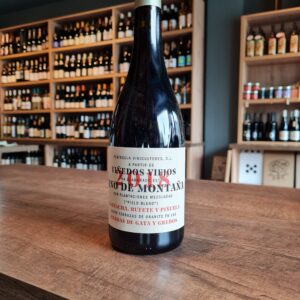 Vinos de Montaña is from a range of mountain wines on high-altitude vineyards in Sierra de Gredos and other historic growing areas in the Sistema Central, the mountain chain that divides the Iberian Peninsula in its Northern and Southern halves. Based mostly on very old Garnacha vines on granite soil, the wines are perfumed, delicate and fresh, displaying the character of their vineyard parcels and villages. This organic wine even though is from a recent created bodega/company, is from old vines revived in the mountain where wine was produced for decades. The Spanish market seemed to picked up on it, as it is becoming increasingly popular with the new enthusiastic wine drinkers generation. Recommended pairing with grilled vegetables, sausages, roasted meats, small game, cured cheeses.
Vinos de Montaña is from a range of mountain wines on high-altitude vineyards in Sierra de Gredos and other historic growing areas in the Sistema Central, the mountain chain that divides the Iberian Peninsula in its Northern and Southern halves. Based mostly on very old Garnacha vines on granite soil, the wines are perfumed, delicate and fresh, displaying the character of their vineyard parcels and villages. This organic wine even though is from a recent created bodega/company, is from old vines revived in the mountain where wine was produced for decades. The Spanish market seemed to picked up on it, as it is becoming increasingly popular with the new enthusiastic wine drinkers generation. Recommended pairing with grilled vegetables, sausages, roasted meats, small game, cured cheeses. -
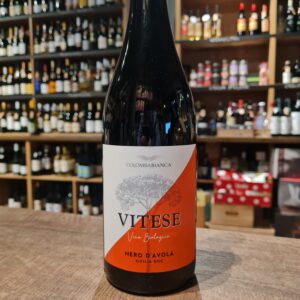 Vitese Nero D'Avola is an organic and vegan wine. It is an intense ruby red with a bouquet very fruity with scents of red berries (cherry, blackberry), fragrant, mineral (graphite), spicy. In the mouth it presents a perfect balance of tannins and acidity, profound taste of great extent and structure, elevated smoothness. Intense, persistent and fine. Pairs well with aperitifs, mature cheese and Ragusano DOP, cold cuts, maialino from the Nebrodi mountains, white and red meats.
Vitese Nero D'Avola is an organic and vegan wine. It is an intense ruby red with a bouquet very fruity with scents of red berries (cherry, blackberry), fragrant, mineral (graphite), spicy. In the mouth it presents a perfect balance of tannins and acidity, profound taste of great extent and structure, elevated smoothness. Intense, persistent and fine. Pairs well with aperitifs, mature cheese and Ragusano DOP, cold cuts, maialino from the Nebrodi mountains, white and red meats. -
 Wine is cheaper than Therapy! We put together these great wines, 3 whites and 3 reds that would put a smile on anyone's face, any day of the week. These wines can be enjoyed with or without food, but we always recommend a nibble. On the whites: Muralhas Vinho Verde - Monção e Melgaço has been producing wines and recognized for it since Roman occupation times, but was with Afonso III, 5th King of Portugal(1210-1279) that signed a ”Foral” that conceded Monção e Melgaço habitants the owners of the local wine and therefore they produced it with pride as they do today. The wine is made from the Alvarinho (predominant) and Trajadura varieties, indigenous to Portugal and the region, more specifically. The dry Muralhas de Moncao Vinho Verde never seems intrusive, but is soft, elegant and harmonious with no wood whatsoever. The wine goes well not only as an aperitif, but also with salads, seafood, fish dishes and white meat. Vitese Colomba Bianca Grillo Biologico- Grillo is the flagship of Sicily's indigenous white varieties, with its aromatic and floral nose. Fresh and harmonious on the well-structured palate, the Vitese Grillo has a long and elegant finish. Lovingly white, Lovingly good !! Bardos Rueda Verdejo- This artisan verdejo is part of the reason the Spanish Rueda region has become quite popular. Made unapologetically, you will find yourself like a true "Bard" drinking this wine. Delicious! On The Reds El Castro de Valtuille Joven - Made by the great Raul Perez. Fresh, mineral-tinged redcurrant and cherry scents that show very good clarity. Tangy, focused and pure on the palate, offering intense flavors of bitter cherry and red berry preserves. Shows a light touch that's quite pinot-like, along with a touch of smokiness that carries through a long, mineral-driven finish. If you want to show somebody what the Spanish region of Mencia smells, feels and tastes like, serve this one. Adega de Penalva Dão 'Indigena' Tinto -Adega de Penalva wines are delicious everyday examples of one of Portugal’s most intriguing appellations — the Dão. Perched above the Dão river itself as it snakes through its granite valleys, the Adega de Penalva is one of the leading cooperatives in the area, boasting around a thousand member growers. It’s important to note, though, that the average holding per member amounts to barely over a hectare—a figure that reminds us how tenaciously much of rural Portugal clings to its old ways. (On that note, all fruit destined for the ‘Indigena’ bottlings is hand-harvested.) Since its founding in the 1960s, the Adega has been collecting its members’ grapes and producing clean, characterful wines with a minimum of fuss. Aromas of leather and blueberries and notes of dark fruits with cherry and raspberry. Tank N32 Primitivo Appassimento IGT - Couldn't finish this wine case without bringing out the guns. This passionate and very well intended Italian red impresses with its perfect combination of elegance and strength. The bouquet reveals aromas of ripe cherries, juicy plums and dried fruit. In particular figs, dates and raisins come to mind. Has a dense and concentrated character. The pleasant and equally subtle residual sweetness gives this red wine a wonderful velvetiness. The long finish of Tank No 32 is carried by delicate notes of nougat and dark chocolate.
Wine is cheaper than Therapy! We put together these great wines, 3 whites and 3 reds that would put a smile on anyone's face, any day of the week. These wines can be enjoyed with or without food, but we always recommend a nibble. On the whites: Muralhas Vinho Verde - Monção e Melgaço has been producing wines and recognized for it since Roman occupation times, but was with Afonso III, 5th King of Portugal(1210-1279) that signed a ”Foral” that conceded Monção e Melgaço habitants the owners of the local wine and therefore they produced it with pride as they do today. The wine is made from the Alvarinho (predominant) and Trajadura varieties, indigenous to Portugal and the region, more specifically. The dry Muralhas de Moncao Vinho Verde never seems intrusive, but is soft, elegant and harmonious with no wood whatsoever. The wine goes well not only as an aperitif, but also with salads, seafood, fish dishes and white meat. Vitese Colomba Bianca Grillo Biologico- Grillo is the flagship of Sicily's indigenous white varieties, with its aromatic and floral nose. Fresh and harmonious on the well-structured palate, the Vitese Grillo has a long and elegant finish. Lovingly white, Lovingly good !! Bardos Rueda Verdejo- This artisan verdejo is part of the reason the Spanish Rueda region has become quite popular. Made unapologetically, you will find yourself like a true "Bard" drinking this wine. Delicious! On The Reds El Castro de Valtuille Joven - Made by the great Raul Perez. Fresh, mineral-tinged redcurrant and cherry scents that show very good clarity. Tangy, focused and pure on the palate, offering intense flavors of bitter cherry and red berry preserves. Shows a light touch that's quite pinot-like, along with a touch of smokiness that carries through a long, mineral-driven finish. If you want to show somebody what the Spanish region of Mencia smells, feels and tastes like, serve this one. Adega de Penalva Dão 'Indigena' Tinto -Adega de Penalva wines are delicious everyday examples of one of Portugal’s most intriguing appellations — the Dão. Perched above the Dão river itself as it snakes through its granite valleys, the Adega de Penalva is one of the leading cooperatives in the area, boasting around a thousand member growers. It’s important to note, though, that the average holding per member amounts to barely over a hectare—a figure that reminds us how tenaciously much of rural Portugal clings to its old ways. (On that note, all fruit destined for the ‘Indigena’ bottlings is hand-harvested.) Since its founding in the 1960s, the Adega has been collecting its members’ grapes and producing clean, characterful wines with a minimum of fuss. Aromas of leather and blueberries and notes of dark fruits with cherry and raspberry. Tank N32 Primitivo Appassimento IGT - Couldn't finish this wine case without bringing out the guns. This passionate and very well intended Italian red impresses with its perfect combination of elegance and strength. The bouquet reveals aromas of ripe cherries, juicy plums and dried fruit. In particular figs, dates and raisins come to mind. Has a dense and concentrated character. The pleasant and equally subtle residual sweetness gives this red wine a wonderful velvetiness. The long finish of Tank No 32 is carried by delicate notes of nougat and dark chocolate. -
Out of stock
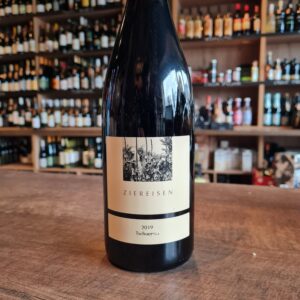 The Ziereisen winery in Efringen Kirchen in the Markgräflerland in Baden has meanwhile become an institution in its own right. Hanspeter Ziereisen originally trained as a carpenter and is therefore a real career changer who has never trained as a winemaker. His parents ran a mixed farm with pigs, cows and 0.5 hectares of vineyards. Overall, the place was characterized by part-time winegrowers who gave their grapes to the cooperative. The successor to the farm was initially uncertain, since none of the children wanted to continue it. In 1991, Hanspeter followed in his parents' footsteps with the clear goal of turning it into a winery. The small area yielded a first vintage of just 6000 bottles in 1993. Acquisitions and leases followed, and over time the business grew to today's 21 hectares. Hanspeter was interested in wine from an early age and so he tried a lot of the most interesting wines in the world. This is how he discovered his love for the red Burgundy. These are still the heart of the company today. With his style, Hanspeter Ziereisen encountered a lot of resistance. An individualist, as fellow winemakers call him, who doesn't want to produce pleasing wines, but independent ones. Spontaneous fermentation, long maceration times, long yeast storage, no filtration and the use of large and small wooden barrels - all this characterizes his style. This stubbornness or the clear definition of one's own style was also punished in the official wine testing. His wines did not fit the classic German profile and could therefore only be sold as country wines. Hanspeter Ziereisen stayed with his line and today his wines are their own brand. In the meantime a conscious decision in order to be able to design the wines in a way that corresponds to the philosophy and to be able to place the character of the wines in the foreground.
The Ziereisen winery in Efringen Kirchen in the Markgräflerland in Baden has meanwhile become an institution in its own right. Hanspeter Ziereisen originally trained as a carpenter and is therefore a real career changer who has never trained as a winemaker. His parents ran a mixed farm with pigs, cows and 0.5 hectares of vineyards. Overall, the place was characterized by part-time winegrowers who gave their grapes to the cooperative. The successor to the farm was initially uncertain, since none of the children wanted to continue it. In 1991, Hanspeter followed in his parents' footsteps with the clear goal of turning it into a winery. The small area yielded a first vintage of just 6000 bottles in 1993. Acquisitions and leases followed, and over time the business grew to today's 21 hectares. Hanspeter was interested in wine from an early age and so he tried a lot of the most interesting wines in the world. This is how he discovered his love for the red Burgundy. These are still the heart of the company today. With his style, Hanspeter Ziereisen encountered a lot of resistance. An individualist, as fellow winemakers call him, who doesn't want to produce pleasing wines, but independent ones. Spontaneous fermentation, long maceration times, long yeast storage, no filtration and the use of large and small wooden barrels - all this characterizes his style. This stubbornness or the clear definition of one's own style was also punished in the official wine testing. His wines did not fit the classic German profile and could therefore only be sold as country wines. Hanspeter Ziereisen stayed with his line and today his wines are their own brand. In the meantime a conscious decision in order to be able to design the wines in a way that corresponds to the philosophy and to be able to place the character of the wines in the foreground. -
Out of stock
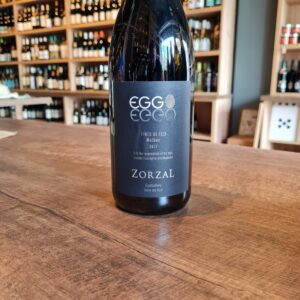 Zorzal, the Argentinian wine brand, was established in 2008, to reflect the immense wine potential of the Gualtallary region to the entire world. Ever since its inception, the group has been working hard so that the wines created here are true representations of the unique natural extravaganza of the Gualtallary region. Located in Tupungato towards the north of the Uco Valley in the Mendoza Province, this region is known for its high-altitude vineyards. Here, the vineyards are planted at a height of around 1200 to 1600m above sea level, which makes them the best place to produce terroir wines, the speciality of the Zorzal label. The Zorzal winery is set up in such a way that it uses sophisticated technology to ensure that the grapes are processed naturally with minimal use of machinery. The winery is constructed on four levels, to allow for natural transportation of the grapes with the help of gravity, so that the dependence on pumps would be reduced to a considerable extent. The use of roll fermenters, cement eggs and other advanced machinery for the grinding, fermenting and guarding processing ensure that the flavor and intensity of the fruits are retained even when the wines are bottled. The temperature-controlled French oak barrels, foudres and cement eggs used in the winery, help to keep the balance, purity, life and minerality of the wines intact. The Eggo line of wines is the modern range of wines that use cement eggs for fermentation and ageing. The conceptual range of wines aren’t limited by the Gualtallary region and are created by passionate winemakers.
Zorzal, the Argentinian wine brand, was established in 2008, to reflect the immense wine potential of the Gualtallary region to the entire world. Ever since its inception, the group has been working hard so that the wines created here are true representations of the unique natural extravaganza of the Gualtallary region. Located in Tupungato towards the north of the Uco Valley in the Mendoza Province, this region is known for its high-altitude vineyards. Here, the vineyards are planted at a height of around 1200 to 1600m above sea level, which makes them the best place to produce terroir wines, the speciality of the Zorzal label. The Zorzal winery is set up in such a way that it uses sophisticated technology to ensure that the grapes are processed naturally with minimal use of machinery. The winery is constructed on four levels, to allow for natural transportation of the grapes with the help of gravity, so that the dependence on pumps would be reduced to a considerable extent. The use of roll fermenters, cement eggs and other advanced machinery for the grinding, fermenting and guarding processing ensure that the flavor and intensity of the fruits are retained even when the wines are bottled. The temperature-controlled French oak barrels, foudres and cement eggs used in the winery, help to keep the balance, purity, life and minerality of the wines intact. The Eggo line of wines is the modern range of wines that use cement eggs for fermentation and ageing. The conceptual range of wines aren’t limited by the Gualtallary region and are created by passionate winemakers.


